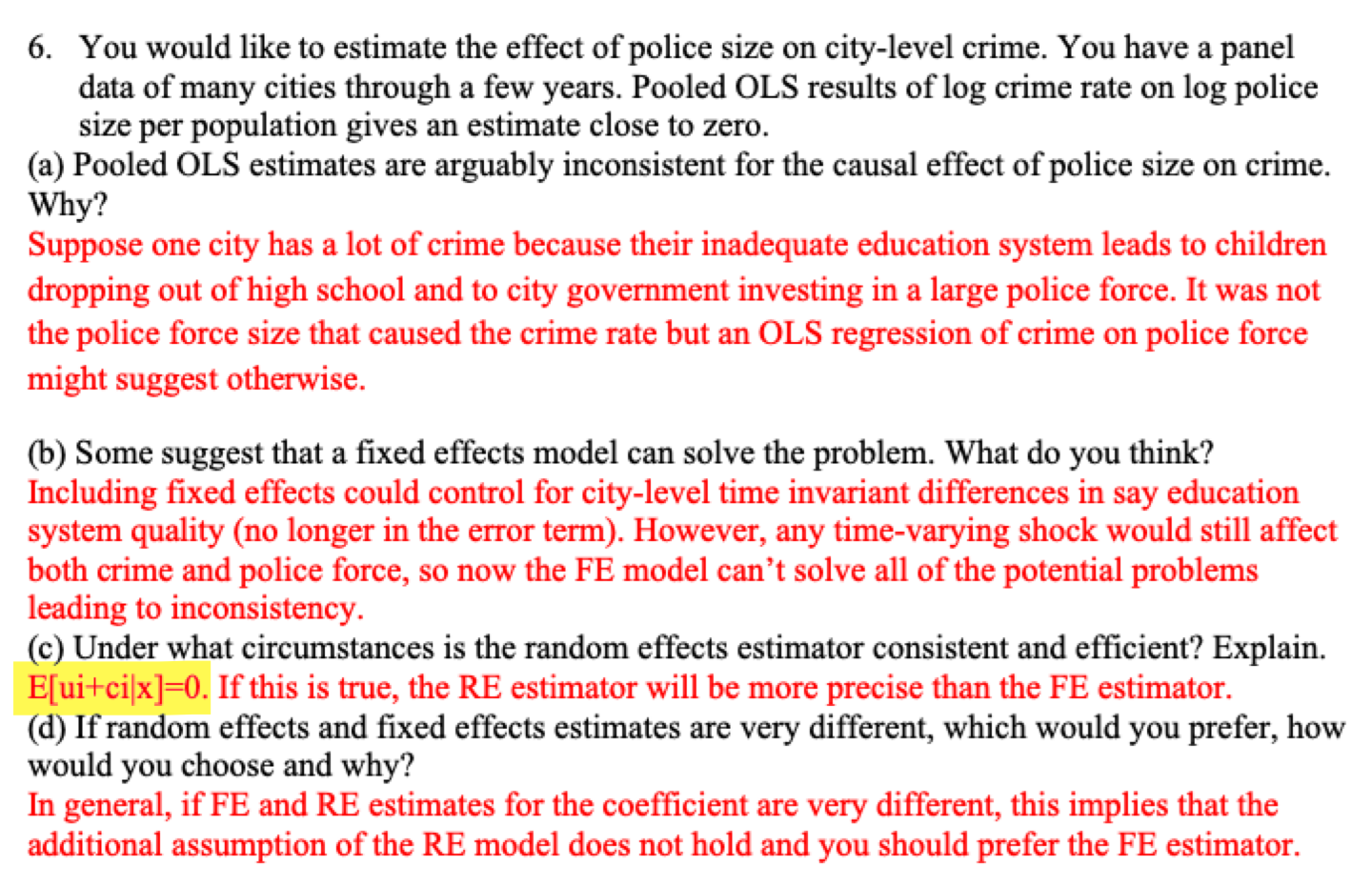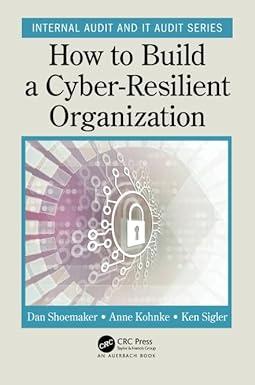Answered step by step
Verified Expert Solution
Question
1 Approved Answer
This is a micro econometrics question, but I do not understand some of the symbols used in the answer (the red parts) Could you please

This is a micro econometrics question, but I do not understand some of the symbols used in the answer (the red parts)
Could you please tell me what does the part that is highlighted in yellow represent?
6. You would like to estimate the effect of police size on city-level crime. You have a panel data of many cities through a few years. Pooled OLS results of log crime rate on log police size per population gives an estimate close to zero. (a) Pooled OLS estimates are arguably inconsistent for the causal effect of police size on crime. Why? Suppose one city has a lot of crime because their inadequate education system leads to children dropping out of high school and to city government investing in a large police force. It was not the police force size that caused the crime rate but an OLS regression of crime on police force might suggest otherwise. (b) Some suggest that a fixed effects model can solve the problem. What do you think? Including fixed effects could control for city-level time invariant differences in say education system quality (no longer in the error term). However, any time-varying shock would still affect both crime and police force, so now the FE model can't solve all of the potential problems leading to inconsistency. (c) Under what circumstances is the random effects estimator consistent and efficient? Explain. E[ ui +cix]=0. If this is true, the RE estimator will be more precise than the FE estimator. (d) If random effects and fixed effects estimates are very different, which would you prefer, how would you choose and why? In general, if FE and RE estimates for the coefficient are very different, this implies that the additional assumption of the RE model does not hold and you should prefer the FE estimator. 6. You would like to estimate the effect of police size on city-level crime. You have a panel data of many cities through a few years. Pooled OLS results of log crime rate on log police size per population gives an estimate close to zero. (a) Pooled OLS estimates are arguably inconsistent for the causal effect of police size on crime. Why? Suppose one city has a lot of crime because their inadequate education system leads to children dropping out of high school and to city government investing in a large police force. It was not the police force size that caused the crime rate but an OLS regression of crime on police force might suggest otherwise. (b) Some suggest that a fixed effects model can solve the problem. What do you think? Including fixed effects could control for city-level time invariant differences in say education system quality (no longer in the error term). However, any time-varying shock would still affect both crime and police force, so now the FE model can't solve all of the potential problems leading to inconsistency. (c) Under what circumstances is the random effects estimator consistent and efficient? Explain. E[ ui +cix]=0. If this is true, the RE estimator will be more precise than the FE estimator. (d) If random effects and fixed effects estimates are very different, which would you prefer, how would you choose and why? In general, if FE and RE estimates for the coefficient are very different, this implies that the additional assumption of the RE model does not hold and you should prefer the FE estimatorStep by Step Solution
There are 3 Steps involved in it
Step: 1

Get Instant Access to Expert-Tailored Solutions
See step-by-step solutions with expert insights and AI powered tools for academic success
Step: 2

Step: 3

Ace Your Homework with AI
Get the answers you need in no time with our AI-driven, step-by-step assistance
Get Started


